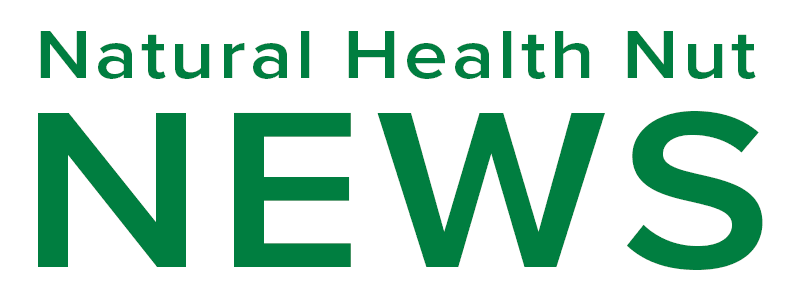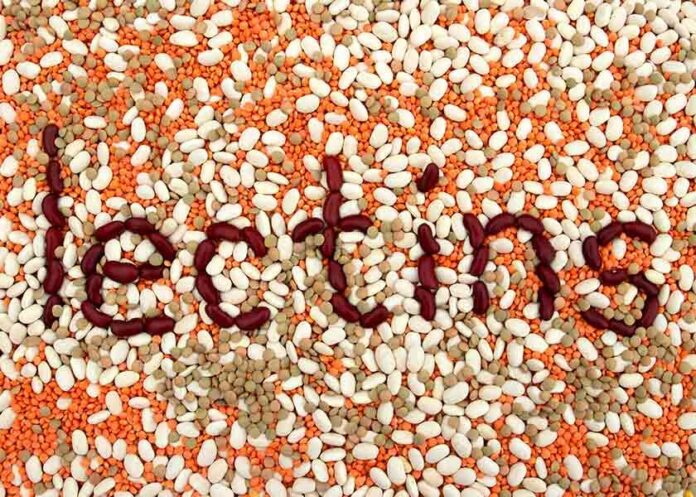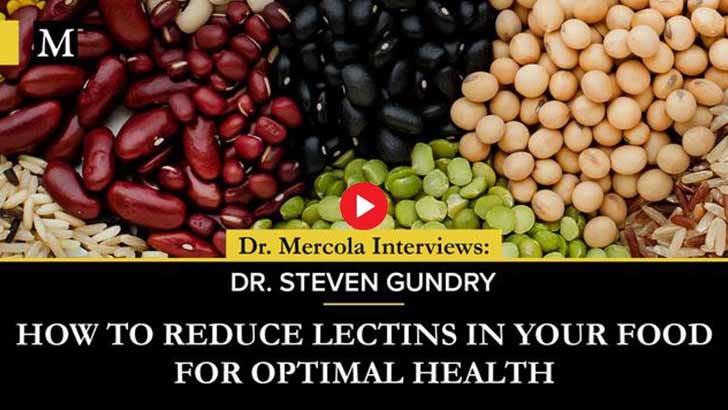STORY AT-A-GLANCE
-
Many lectins are proinflammatory, immunotoxic, neurotoxic and cytotoxic. Certain lectins may also increase blood viscosity, interfere with gene expression and disrupt endocrine function
-
Among the most problematic lectin-containing foods are corn, corn-fed meats, casein A1 milk, peanuts, cashews and unfermented soybeans. These are best avoided altogether
-
High-lectin foods such as legumes and grains can be made safe to eat by proper soaking and cooking. Sprouting, fermenting and removing skins and seeds will also help reduce lectins in your diet
Editor’s Note: This article is a reprint. It was originally published August 14, 2017.
Lectins1 — sugar-binding plant proteins that attach to cell membranes — may be a hidden source of weight gain and ill health, even in an otherwise healthy diet. In fact, since lectins are present in most plant foods, if you’re eating a whole food diet yet find yourself still struggling with weight gain and/or stubborn health problems, lectins may well be a hidden culprit.
Many lectins are proinflammatory, immunotoxic, neurotoxic and cytotoxic. Certain lectins may also increase blood viscosity, interfere with gene expression and disrupt endocrine function.
The problem with recommending an altogether lectin-free diet is that this would eliminate most plant foods,2 which should ideally make up the bulk of your diet. Moreover, in small amounts, some lectins can be quite beneficial,3 so 100% avoidance is likely neither possible nor ideal. They key then becomes finding a happy medium where the worst lectins are avoided, and the effect of others are tempered through proper preparation and cooking.
How Lectins Can Wreck Your Health
Before we get into strategies to reduce lectins in your diet, let’s review the reasons why. As explained in Dr. Steven Gundry’s4 book, “The Plant Paradox: The Hidden Dangers in ‘Healthy’ Foods That Cause Disease and Weight Gain,” some plant lectins can contribute to leaky gut by binding to receptor sites on your intestinal mucosal cells, thereby interfering with the absorption of nutrients across your intestinal wall.
As such, they act as “antinutrients,” and can have a detrimental effect on your gut microbiome by shifting the balance of your bacterial flora. Among the worst culprits are wheat germ agglutinin (WGA), found in wheat and other seeds in the grass family.5
Compared to WGA, gluten is a minor problem. According to Gundry, WGA is actually one of the most efficient ways to induce heart disease in experimental animals. Lectins in general are strongly associated with autoimmune disorders, so anyone struggling with a dysfunctional immune system may want to seriously consider experimenting with a low-lectin diet.
One way by which lectins causes harm is through molecular mimicry. By mimicking proteins in your thyroid gland or joint spaces, for example, lectins can cause your body to attack your thyroid and contribute to rheumatoid arthritis. Part of these disease processes is the penetration of the gut wall by lectins and their co-travelers, lipopolysaccharides (LPSs), also known as endotoxins, which tend to elicit very strong immune responses.
Lectin-Rich Foods Best Avoided Entirely
While it may be near-impossible to avoid all lectins, seeing how they’re found in most plant foods, your first step would be to eliminate the worst offenders. If you have any kind of health problem in which lectins are a suspected contributor, it would be wise to eliminate the following entirely:6
-
Corn
-
Corn-fed meats — This includes most meats sold in grocery stores. To avoid factory farmed, corn-fed meat, make sure the meat you buy is certified grass fed by the American Grassfed Association.
-
Casein A1 milk — Casein A2 is the normal protein in milk, present in sheep, goats, water buffalos and some Jersey cows’ milk. Unfortunately, most cows today are casein A1 producers. Most store-bought milk will be A1, even if it’s organic. The A1 protein is metabolized in your gut to make beta-casomorphin, which can attach to the beta cell of your pancreas and incite an autoimmune attack.
Many who believe they’re lactose intolerant are actually just responding to the casein A1 in the milk. If you’re going to drink milk, make it raw milk from organic, grass fed casein A2-producing cows. Jersey cows may produce either A1 or A2 casein, so you’ll need to confirm the type of milk produced with the farmer. Holsteins are A1 producers and should be avoided.
-
Peanuts, cashews and unfermented soybean products — If you want to eat soy, make sure it’s traditionally fermented.
High-Lectin Foods to Eat Sparingly
The following foods are also high in lectins, but at least here you have a choice: You can either avoid these foods or eat them sparingly, and when you do, make sure you prepare and cook them properly. Research demonstrates that by sprouting, fermenting, soaking and cooking high-lectin foods, lectin content is dramatically reduced, making them safe to eat for most people. This group includes:7 8 9
-
Legumes (plant seeds in pods, such as peas and beans10)
-
Grains, especially whole grains
-
Nightshade fruits and vegetables (such as tomatoes, potatoes, eggplants, bell peppers and goji berries, just to name a few)
-
Curcubita (gourd) family fruits such as squash, pumpkin and zucchini
Among the legumes, some beans are also lower in lectins than others, making them a safer bet.11 Among the moderate-to-low lectin varieties are rice beans, cowpeas, broad beans, lupin seeds, Great Northern beans and Pinto III cultivars. Among the lowest, and therefore the safest, are Polish pea varieties, cooked and raw green beans and lentils.12
High-to-moderate varieties best avoided if you’re susceptible to lectins are white kidney beans and soybeans. Red kidney beans are among the highest of all. For comparison, white kidney beans contain one-third of the hemagglutinating units of toxic phytohemagglutinin found in raw red kidney beans, and broad beans contain just 5 to 10% of the lectins found in red kidney beans.
Beans — Proper Prep and Cooking Guidance
If you choose to eat beans, be sure to prepare and cook them properly. While absolutes are rarely called for, a warning is appropriate here: NEVER eat raw or undercooked beans, as they can have acute, toxic effects. As little as five beans can cause a reaction reminiscent of food poisoning. To make beans safe to eat, be sure to:
-
Soak the beans in water for at least 12 hours before cooking, frequently changing the water. Adding baking soda to the soaking water will boost the neutralization of lectins even further.13
-
Rinse the beans and discard the water used for soaking.
-
Cook for at least 15 minutes on HIGH heat. Cooking beans on too-low a heat can actually increase toxicity levels up to five times or more.14 Avoid any recipe calling for dry bean flour, as the dry heat of your oven will not efficiently destroy the lectins. The best way to destroy lectins is to use a pressure cooker like the InstaPot.15 16
How to Optimize Health Benefits of Potatoes
The lectin content in potatoes (a member of the nightshade family) will also be reduced by cooking, although these lectins tend to be more resistant to heat than those in beans. In the case of potatoes, cooking will reduce the lectin content by 50 to 60%. You can also boost the nutritional value of potatoes by chilling them after cooking.
This increases the digestive-resistant starch in the potatoes — fibers that resist digestion in the small intestine and slowly ferment in your large intestine, where they act as prebiotics that feed healthy bacteria.17
As an example, roasted and cooled potatoes contain 19 grams of resistant starch per 100 grams, whereas steamed and cooled potatoes contain 6 grams and boiled, cooled potatoes contain a mere 0.8 grams.18 19 Additionally, since they’re not digestible, resistant starches will not result in blood sugar spikes. In fact, research suggests resistant starches help improve insulin regulation, reducing your risk of insulin resistance.20 21 22 23
Safe Lectins
Of the plant foods that are the safest, in terms of lectin content, are asparagus, garlic, celery, mushrooms and onions. Other excellent choices that you can eat without restrictions are:
-
Cooked tubers (root vegetables) such as sweet potatoes, yucca and taro
-
Leafy greens
-
Cruciferous vegetables such as broccoli, cauliflower and Brussels sprouts
-
Avocados (while avocados contain high amounts of lectins,24 these lectins are safe and healthy. Research25 shows that the specific type of lectin found in avocado, persea Americana agglutinin,26 is devoid of specificity for carbs; it interacts with proteins and polyamino acids instead)
-
Olives and authentic extra-virgin olive oil
Other Ways to Reduce Lectins in Your Diet
Aside from eliminating the worst offenders and cooking certain high-lectin foods properly, other ways to reduce lectins in your diet include:
-
Peeling and deseeding your fruits and vegetables, as the skin or hull and seeds tend to contain the highest amounts. For example, if you’re on a lectin-restricted diet, you may be able to eat deskinned almonds, but not almonds with the skin on.
-
Opting for white grains over brown — This tip, suggested by Gundry, does run contrary to most recommendations that say brown varieties are healthier than white, but in this case, white rice and white bread may actually be preferable.
Keep in mind, though that the only way to make bread safe to eat on a lectin-restricted diet is by raising the bread according to traditional methods, using yeast or sourdough, which effectively breaks down the gluten and other harmful lectins. You’d be hard-pressed to find this in your local grocery store, so you’d either have to buy it from a traditional artisan or bake it yourself.
You’ll also want to make sure the grain is organic, as most non-organic wheat grown in the U.S. is desiccated with glyphosate. This herbicide, which is toxic in and of itself, also potentiates gluten in people who are not even gluten-sensitive and interferes with your liver’s ability to manufacture the active form of vitamin D.
It also chelates important minerals, disrupts the shikimate pathway, decimates your microbiome and increases leaky gut, which allows more of the LPSs into your bloodstream.
-
Sprouting seeds, grains and beans will deactivate lectins, although there are exceptions. For example, lectin content is actually enhanced when sprouting alfalfa.27
-
Fermenting will also effectively reduce harmful lectins.28 When it comes to soy, fermented soy products are the only ones worthy of consumption. Sourdough is another example of a fermented product that makes bread safe to eat, in part by deactivating lectins. Of course, all sorts of vegetables can be fermented, thereby boosting their health benefits.
-
Using a pressure cooker — Plant lectins are most effectively neutralized when cooked in a pressure cooker, so this handy kitchen gadget may be a worthwhile investment. Many swear by multipurpose “instant” cookers,29 which are multipurpose cookers that can steam or slow cook. Avoid slow cooking and slow cookers, though, as they will actually increase lectin content due to the low temperature used.
A study30 that compared the phytic acid content of soaked peas that were then either boiled regularly or cooked in a pressure cooker found pressure cooking reduced phytic acid content by 54%, compared to 29% through regular boiling. Pressure cooking may also preserve more nutrients than other cooking methods.
Limit but Don’t Eliminate All Lectins
In summary, while I believe lectins have the potential to wreak havoc on health, complete avoidance is neither possible nor ideal. Conducting an online search for “lectin-rich foods” will yield lists that are so long, they basically encompass the entire vegetable kingdom. You cannot eliminate them all, and since SOME lectins have health benefits, you wouldn’t want to, either.
The key is to identify the worst culprits, cut those out, and make sure you prepare and cook certain high-lectin foods properly to make them safer to eat. Naturally, your individual situation will determine just how strict you need to be. Many people, especially those with autoimmune disorders, tend to be particularly sensitive to specific lectins found in specific foods.
So, experimentation may be needed to identify them. As a general rule, I recommend paying particular attention to lectins if you are currently eating a healthy, whole food diet yet continue to have health problems. While not a guarantee for success, eliminating or reducing lectins just might be the missing key to your healing.
Disclaimer: The entire contents of this website are based upon the opinions of Dr. Mercola, unless otherwise noted. Individual articles are based upon the opinions of the respective author, who retains copyright as marked.
The information on this website is not intended to replace a one-on-one relationship with a qualified health care professional and is not intended as medical advice. It is intended as a sharing of knowledge and information from the research and experience of Dr. Mercola and his community. Dr. Mercola encourages you to make your own health care decisions based upon your research and in partnership with a qualified health care professional. The subscription fee being requested is for access to the articles and information posted on this site, and is not being paid for any individual medical advice.
If you are pregnant, nursing, taking medication, or have a medical condition, consult your health care professional before using products based on this content.
Source: Source link
Publish Date:



